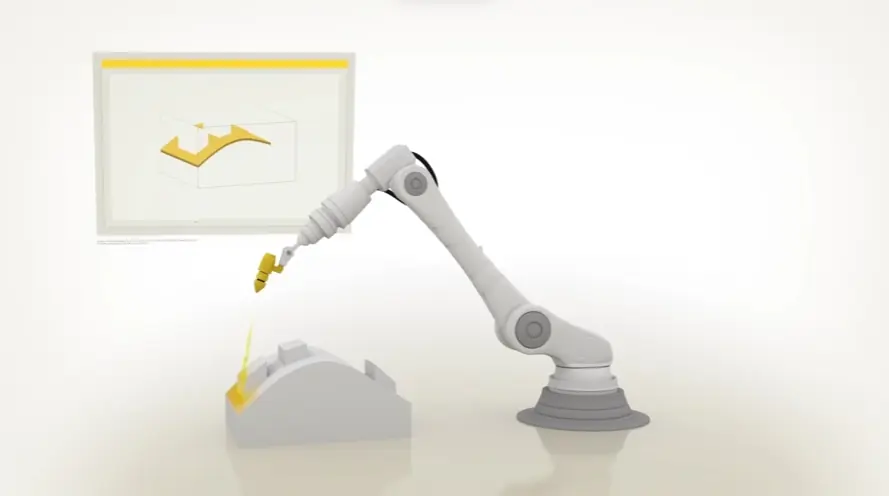We see brands crafting stories, showcasing visuals, that's their magic, you know, where there's a will, there's a way. We observe brands gaining attention through smart video strategies. These videos encourage viewers to pause their scrolling, leading to purchases, and they build strong brand communities. We recognize visually rich content as a vital marketing tool. Strategic video marketing implementations reveal truly exceptional things in today's world.
These trends showcase the power of video, not just a trend, but the heart of modern marketing. It's time to use this power to share your brand's story. Let's explore 30 captivating video examples that will inspire you to create impactful content.
It’s crucial to plan ahead when it comes to high-quality video production. Discuss with our team, how you can get visual style, budget, timeline in sync.
Jai Ghosh
Video Producer at Advids
Let's talk

How can we use a short-form video ad to capture attention in our marketing funnel?
Short-form video ads capture attention quickly using compelling visuals and a clear message, ensuring viewers engage within the first few seconds.
What narrative structures work best for engaging video ads?
Effective narrative structures for video ads include problem-solution, storytelling, and showcasing benefits, all delivered with a concise and engaging approach.
How do companies in our sector use video ads to drive leads?
Video ads generate leads by showcasing product demos, customer testimonials, and offering clear calls-to-action.
What pre-production steps are crucial for a successful video ad?
Crucial pre-production steps include defining the target audience, setting clear objectives, creating a detailed script, and planning the visual style.
How can we adapt existing assets for compelling video ad content?
Existing assets can be adapted into engaging video content by repurposing them with motion graphics, voiceovers, and dynamic transitions.
What are the best practices for video ads that meet our marketing goals?
Best practices for video ads include keeping them concise, using strong visuals, adding clear calls-to-action, and optimizing for various platforms.
How can we ensure brand message clarity in our video ads?
Brand message clarity is ensured by focusing on a single core message, using consistent branding, and employing clear and concise language.
What visual styles are most effective for video ads?
Effective visual styles for video ads include clean, modern designs, vibrant colors, and high-quality footage that aligns with the brand's identity.
How do we create a storyboard for video ad narratives?
A storyboard is created by outlining each scene, sketching key visuals, and adding notes on transitions, text, and audio elements.
What are the key elements of a compelling script for video ads?
Key elements of a compelling script include a strong opening hook, a clear value proposition, and a call-to-action that drives the desired response.
How can video ads build trust with potential customers?
Video ads build trust by showcasing authentic customer stories, providing transparent information, and demonstrating expertise through engaging content.
How can video ads highlight our unique value proposition?
A unique value proposition is highlighted by showcasing the benefits of services, focusing on expertise, and demonstrating a unique approach.
What approaches resonate with our target audience in video ads?
Approaches that resonate with a target audience include using relatable scenarios, addressing their pain points, and offering solutions through engaging visuals.
What is the ideal length for engaging video ads?
The ideal length for engaging video ads is typically between 15 to 60 seconds, depending on the platform and the complexity of the message.
How can video ads create an emotional connection with our audience?
Video ads create an emotional connection by using storytelling, relatable characters, and evocative music, which helps build a stronger brand affinity.
Who is your ideal customer for video advertising?
So, we've seen the impact of powerful video advertisements examples, but who exactly is this strategy perfect for? It's not about jumping on a trend; it's about aligning with your audience and goals. Let's explore if video advertising is the right fit for you.
Think about it, are you trying to reach a younger audience that practically lives on their phones? Are you looking for ways to make your brand more human and relatable? If so, video could be your secret weapon.
- If you're struggling to explain a complex product, video can simplify it with visuals.
- Need to build brand awareness quickly? Shareable video content can do wonders.
- Want to create a deeper connection with your audience? storytelling through video is incredibly powerful.
- Are you aiming to boost website traffic and conversions? Video can be a compelling call to action.
Ultimately, video advertising is most effective when it's part of a well-thought-out strategy. It's about understanding your audience and using video to tell your story in a way that resonates.
What specific action should viewers take after watching?
So, you've just created a powerful advertisement video, what happens next? It's not enough for viewers to simply watch; we want them to take action. We need to guide them on a journey that extends beyond the screen. Let's explore how we can turn viewers into active participants.
- Explore the website further. This is where viewers can delve deeper into your brand story and discover more about your offerings.
- Check out related products. This allows them to find other items they might love, expanding their engagement with your brand.
- Sign up for our newsletter. This keeps them in the loop with the latest news, updates, and exclusive offers.
- Follow our social media channels. This helps build a community around your brand, fostering deeper connections.
Think about it, if you are using corporate films, what if we added a clear call to action at the end? Or for product demos, how about encouraging viewers to request a personalized demo? The goal is to create a seamless experience, guiding viewers from the video to the next logical step. We want them to feel like they are part of something bigger, not just passive observers. This is how we transform a simple advertisement video into a powerful tool for engagement.
Ultimately, the success of your advertising campaigns hinges on the actions viewers take after watching. Let's make sure those actions are clear, compelling, and easy to follow.
How to use narrative to captivate your audience?
We've seen how powerful video can be, but how do we make our marketing videos truly unforgettable? It's all about the story we tell. Let's dive into how we can use narrative to captivate our audience, turning simple video ads into compelling experiences.
- Start with a hook that grabs attention immediately, like a question or a surprising statement.
- Introduce a protagonist that viewers can connect with, someone they can root for or relate to.
- Establish a central conflict that drives the story forward, creating tension and keeping viewers engaged.
- Build emotional resonance by tapping into feelings, making the story feel personal and impactful.
Think about how even short business videos can benefit from a well-crafted narrative. It's not just about showing your product; it's about creating a connection. We can use a relatable setting, a journey of transformation, and even a surprising twist to make our advertisement video stand out.
By weaving a compelling narrative, we can transform our marketing videos from simple advertisements into powerful stories that connect with our audience on a deeper level. This approach helps us not just inform, but also inspire and engage.
How does your brand's voice translate to video?
We've seen how powerful video can be, but how do we ensure our brand's unique personality shines through? It's not just about creating any video; it's about crafting brand video examples that truly reflect who we are. Let's explore how we can translate our brand's voice into compelling video content.
- Let's start by identifying our core brand values. What principles guide us? These should be the foundation of our video content. Think about how we can showcase these values in a way that resonates with our audience.
- Next, consider our target audience's preferences. What kind of content do they enjoy? What tone of voice will they respond to? Tailoring our videos to their tastes is key to engagement.
- How can we establish a consistent visual style? Think about the colors, fonts, and overall aesthetic that represent our brand. This consistency will help viewers instantly recognize our videos.
- Finally, let's focus on emotional connection. How can we tap into our audience's feelings and create a lasting impact? This is where we can move beyond simple advertising video examples and create something truly memorable.
By focusing on these aspects, we can ensure our brand's voice is clear and compelling in all our creative advertisement videos. This approach helps us not just inform, but also inspire and engage.
How to grab attention in the first few seconds?
Okay, we've talked about the power of video, now let's get real about those crucial first few seconds. Think of it like this, you've got a few heartbeats to make someone stop scrolling and actually watch. How do we make that happen? It's not about being loud, it's about being unforgettable.
Here are some ways to make those initial moments truly pop.
- Imagine starting with a question that's so intriguing, it's like a mental cliffhanger.
- Drop a statistic that's so surprising, it's like a mini-earthquake for their attention.
- Show a visually stunning image that's so captivating, it's like a magnet for their eyes.
- Think about those captivating animation video examples, what made them so instantly engaging?
What makes effective advertisement videos so compelling? It's often that initial impact. When it comes to advertisement video production, those first few seconds are your golden opportunity. Let's take a look at some commercial video examples, and see how they hook you right away. The key is to be bold, be different, and be memorable.
How to evoke feelings through video advertising?
We've talked about the power of video, but how do we make our audience *feel* something? It's not enough to just show, we need to connect on a deeper level. Let's explore how we can use video to evoke genuine emotions, transforming our videos from simple advertisements into powerful experiences.
- Think about using relatable characters, they are our emotional anchors.
- Show authentic human experiences, these moments are the heart of connection.
- Incorporate genuine reactions, these add a layer of realness.
- Use music to amplify emotions, it's the soundtrack to our feelings.
We can use color psychology to influence mood, create suspenseful moments to keep viewers engaged, and show vulnerability to build trust. We can evoke nostalgia, highlight joy, address fears, showcase kindness, create a sense of belonging, use powerful imagery, share inspiring stories, and end with a hopeful message. Even in corporate video examples, we can see how a focus on emotion can transform a simple message. The best advertisement videos often aren't about the product, but about the feelings they create. Exploring different advertisement video styles, we see how some excel at evoking emotion. To create truly engaging advertisement videos, we must focus on the emotional journey.
By focusing on these elements, we can create videos that not only inform but also inspire and connect with our audience on a profound level.
How to effectively showcase your product in video?
We've explored the power of video, now let's get into how we can make our products shine. It's not just about showing off; it's about making our audience see the value and feel excited about what we offer. Think about those great explainer video examples you've seen; they break down complex ideas into simple terms. That's the kind of clarity we're aiming for.
- Let's visually highlight key features, allowing viewers to quickly grasp what makes our product unique.
- Show the product in action, demonstrating its real-world application and problem-solving capabilities. Look at successful product video examples; they often show the product in real-world scenarios, solving a problem.
- Use clear, concise language, avoiding jargon and ensuring our message is easily understood. Remember those impactful short advertisement videos; they grab attention quickly and deliver a clear message.
- Consider how 3D animation video examples use dynamic camera angles to showcase products in a unique way.
We can also use close-up shots to showcase intricate details, incorporate on-screen text to emphasize key points, and show product variations to cater to different needs. Let's remember to keep the focus on the product, use dynamic camera angles, maintain a consistent visual style, and ensure good lighting and sound. Finally, let's end with a clear call to action, guiding viewers to the next step.
How to present your product as a solution to a problem?
We've seen how powerful video can be, now let's make our product the star. How do we create videos that show our product not just as an item, but as the answer our audience has been searching for? Let's explore how to make our informative advertisement videos not just informative, but also persuasive.
Think about some of the most effective promotional video examples you've seen – what made them work? Often, it's how they clearly show the problem and then present their product as the solution. To create top advertising videos, we need to show our product as the hero.
- First, let's pinpoint the exact problem our product solves. What pain point are we addressing?
- Then, let's visually portray this problem, making it relatable to our viewers.
- Next, we introduce our product as the clear solution, showing how it works to solve the problem.
- Finally, we highlight the key benefits, not just features, and show the positive impact of using our product.
Let's learn from advertisement video case studies that have successfully presented products as solutions. By focusing on the problem, showing the solution, and making it easy to understand, we can create videos that not only inform but also persuade.
What key metrics to track for video ad success?
Okay, we've seen how powerful video can be, but how do we know if our efforts are actually paying off? It's not enough to just put out great content; we need to understand what's resonating with our audience and what's not. That's where tracking the right metrics comes in. We need to move beyond just counting views and dive into the data that reveals true engagement and impact. Think about it, are our marketing video examples actually driving results?
Let's explore some key metrics that can help us understand how our videos are performing.
- View Completion Rate tells us how many people watched the entire video, giving us a clear picture of how engaging our content is.
- Average Watch Time shows us how long viewers are staying engaged, highlighting which parts of our video are most captivating. For example, if we are using 2D animation video examples, are people watching till the end?
- Click-Through Rate measures how many viewers are taking the next step, like visiting our website or checking out our service video examples.
- Engagement Rate helps us understand total interactions, including likes, shares, and comments, showing how our video resonates with the audience. Even for motion graphics video examples, we can see if our visual style is working.
By carefully monitoring these metrics, we can refine our video strategy and ensure we're maximizing our return on investment. It's about making sure our videos are not just seen, but truly felt and acted upon.
How to control the tempo of your video advertisement?
We've seen how powerful video can be, now let's talk about tempo, the heartbeat of your video ad. It's not just about speed, it's about how the rhythm makes your audience feel. Think of it like a song, the tempo guides the emotion.
- Vary shot lengths. Imagine a fast-paced *Advertising Explainer* video, using quick cuts to show product features, then slowing down to highlight a key benefit.
- Use slow motion. For *Brand Advocacy*, a slow-motion shot of a customer using your product can build trust and show its value.
- Match tempo to the emotional tone. If you are showcasing a *SaaS Adaption*, a fast pace can show ease of use, while a slower pace can highlight the value of complex features.
- Align music tempo. Picture a *3D Animated Advertisement*, where the music's rhythm perfectly matches the animation's pace, creating a unique visual experience.
Consider how pauses can build anticipation, and how speed ramps can add dynamic movement. We must test different pacing variations to see what resonates best with our audience. Remember, the overall tempo should enhance the video's message.
Controlling tempo is about understanding how rhythm affects emotions, and how we can use it to make our videos more engaging.
Author & Editor Bio
A video producer with a passion for creating compelling video narratives, Jai Ghosh brings a wealth of experience to his role. His background in Digital Journalism and over 11 years of freelance media consulting inform his approach to video production. For the past 7 years, he has been a vital part of the Advids team, honing his expertise in video content planning, creation, and strategy.
His collaborative approach ensures that he works closely with clients, from startups to enterprises, to understand their communication goals and deliver impactful video solutions. He thrives on transforming ideas into engaging videos, whether it's a product demo, an educational explainer, or a brand story.
An avid reader of modern marketing literature, he keeps his knowledge current. Among his favorite reads from 2024 are "Balls Out Marketing" by Peter Roesler, "Give to Grow" by Mo Bunnell and "For the Culture" by Marcus Collins. His results-driven approach ensures that video content resonates with audiences and helps businesses flourish.





